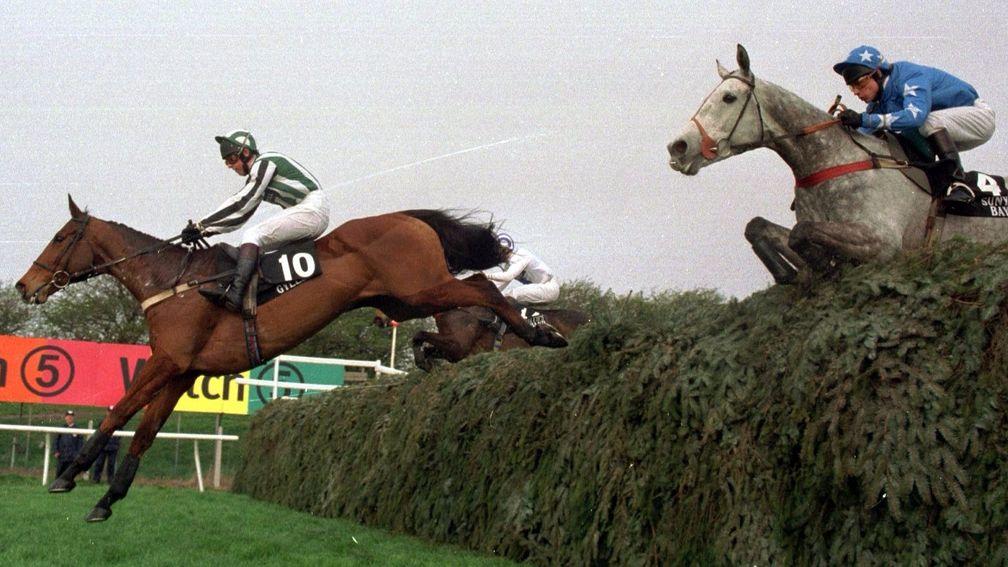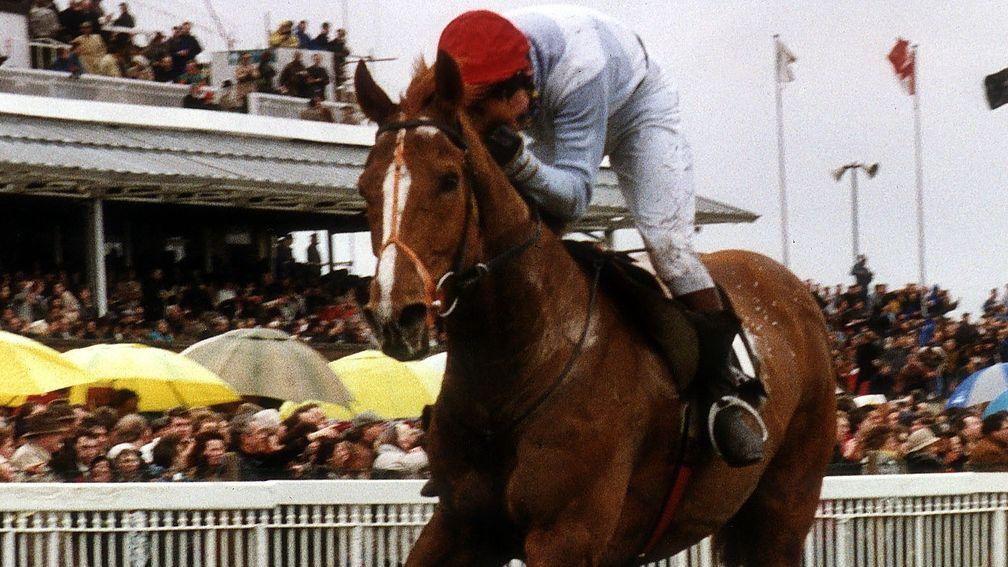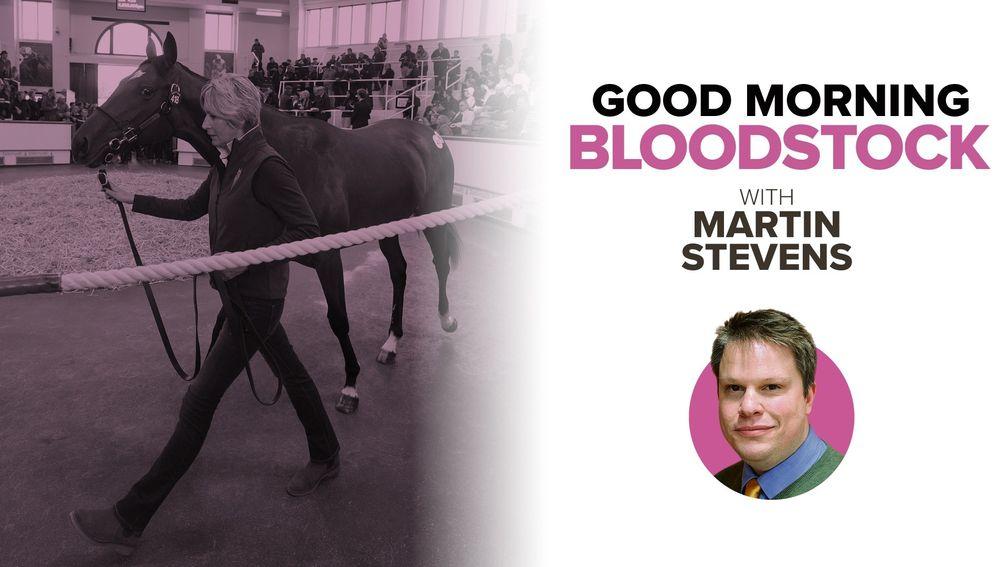Whatever happened to New Zealand-bred jumpers in Britain and Ireland?
Martin Stevens answers the question upon the 25th anniversary of Lord Gyllene

Good Morning Bloodstockis Martin Stevens' daily morning email and presented here online as a sample.
Here he ruminates on a once familiar part of jumps racing in Britain and Ireland that is now almost extinct - subscribers can get more great insight from Martin every Monday to Friday.
All you need do is click on the link above, sign up and then read at your leisure each weekday morning from 7am.
This year marks the 25th anniversary of Lord Gyllene making mincemeat of his rivals in the Monday Grand National.
Rewatching the race this week reminded me just how bloodless his victory was. It’s really quite extraordinary that he could have made so much of the running and yet still rounded the Elbow and galloped up the run-in with such apparent enthusiasm.
The recording also brought back a painful memory of yet another of my Grand National bets that went south, as Sir Peter O’Sullevan called home Nahthen Lad among the also-rans in his last commentary on the race. No doubt my punting kitty will suffer again on Saturday.
More than anything else, though, rekindling my memories of events at Aintree a quarter of a century ago has got me wondering whatever happened to New Zealand-breds like Lord Gyllene in National Hunt racing.
They were once a fairly common sight on the racecard. Lord Gyllene, who was bought by his owner Sir Stanley Clarke after watching recordings of his wins in New Zealand, was the second Grand National winner with an NZ suffix in relatively quick succession after Seagram in 1991, and the third overall with Moifaa having scored in the race in 1904.
Seagram’s trainer David Barons enjoyed tremendous success in importing New Zealand-bred jumpers to Britain in the 1980s, and unearthed another gem from the country in his Hennessy Gold Cup and Welsh National hero Playschool.
He might have been inspired by Derek Kent, a pioneer in engaging with far-flung jump racing jurisdictions whose finest representative, Grand Canyon, came from New Zealand. A top novice hurdler, though beaten at long odds-on in the Supreme Novices’ Hurdle of 1976, he developed into a truly great chaser, winning a string of big races at home and abroad.
There were still a handful of New Zealand-bred horses making an impact in Britain and Ireland in the first decade of the new millennium, including the Sir Robert Ogden-owned Brother Joe and The Market Man, as well as the classy chasers Our Armageddon and Stan, but they seem to have fallen out of favour considerably since then.
By my reckoning, the only one to have contested the Grand National since 2010 was Lost Glory in 2013, but he and Punchestown Champion Bumper winner Sweeps Hill were a unique case as they were among a raft of Montjeu yearlings bought by JP McManus from Karaka around the time.
Dennis Ryan, an award-winning journalist and accomplished trainer and breeder in New Zealand, has shared with Good Morning Bloodstock a few of his memories of the NZ invasion of northern-hemisphere jump racing.
“I remember Grand Canyon well from his days as a promising Flat galloper," he says. "He was trained in Matamata by Terry Alcock, who was also training for my father at the time, in the early 1970s.
“Grand Canyon was by the Tantieme stallion Oakville, who sired quite a few horses noted for their ruggedness and versatility. His best was Arbre Chene, a Group 1 winner from six to ten furlongs, the latter coming in the Air NZ Stakes at Ellerslie thanks to a masterly ride by the one and only Lester Piggott.
“Grand Canyon was no great shakes on the Flat, but as a still maturing horse he was spotted by New Zealand entrepreneur DW (Pat) Samuel, who in his travels had developed a penchant for European jump racing.
“I understand that in a six-win sequence in the UK, Grand Canyon set six course records, thanks to his spectacular, fluent style. He also won the 1976 and 1978 Colonial Cup in South Carolina, which from the early 1970s was the world's first jumps race with a purse of $100,000 and regularly drew an international field.
“Pat Samuel ventured north with numerous horses and jockeys – Brett McDonald, father of champion Sydney jockey James, and leading NZ amateur Denis Gray are two who spring to mind – and even included jumps racing in northern Italy in his sojourns.”

Remembering the two more recent New Zealand-bred Grand National winners, he adds: “Seagram was bred by Waikato horsewoman Jeanette Broome, who stands alone as the only person to breed a Grand National winner and Melbourne Cup winner – Jezabeel in 1998.
“David Barons, who of course provided the sponsors with a dream result when sending out Seagram to win the Seagram Grand National, retired to New Zealand and died here in 2018.
“Lord Gyllene was by NZ Derby winner Ring The Bell, who contested the 1980 Prix de l'Arc de Triomphe. He was also bred in the Waikato, by Nola Taylor, and was raced by keen jumps enthusiast Ray Knight in partnership with trainer Tony Cole.
"They were offered a six-figure sum for the horse after he had finished third in the Pakuranga Hunt Cup Steeple over the Ellerslie Hill.”
Perhaps one reason we don’t see horses like Seagram and Lord Gyllene snapped up to race in Europe any more is that National Hunt racing in New Zealand isn’t thriving quite as much as it was all those years ago.
Paul Claridge, a senior industry figure in the sport in the country, says the situation has been exacerbated by a lack of suitable stable staff there.
“NZ Racing, like a lot of other organisations, has been slow to adjust to changes in the societal make-up of our country, and now faces significant challenges of engaging community participation,” he says. “The lack of people now riding for pleasure or eventing purposes has obviously had a knock-on effect into the New Zealand jump racing scene.
“Back in the era of Grand Canyon, Seagram and Lord Gyllene there were probably 40-50 capable race-day jump riders in New Zealand, and in those good old days an owner or trainer could have thrown their silks into the weighing room and been happy with whoever decided to wear them out onto the track for you.
“We also had no shortage of track-work or amateur riders who had made their way into racing through pony and hunting clubs. These people were willing and able to educate potential jumpers as they worked their way up towards a jumping career.
“Unfortunately, modern society has changed and where once the weekend was set aside for family and recreation, we now live in a world where people can no longer afford not to work on the weekends or afford the costs associated with owning ponies. Many are also adverse to facing the reality that, sometimes, both horse and riders can get injured.”
He adds: “Currently we have only around 20 active race-day riders, 95 per cent of whom are based in the North Island. While there are several more riders listed on the NZTR website, it’s a façade as in reality a large number of those have no intention of riding race-day again over fences.
“The lack of riders and the base location of those remaining riders means many of our leading stables can’t readily educate late-maturing horses as potential jumpers, and up until recently the potential return on investment was no incentive.
“To demonstrate what I'm talking about, one of our most famous southern racing families, the Andertons, no longer have jumpers in their stables due to the lack of opportunities to race jumpers in the South Island.
“They are traditionalist and have constantly bred some of New Zealand’s toughest and durable horses. But instead of sending their potential jumpers north, this iconic stable now prefers to resell those suitable horses to meet the demand of the Australian market.”
On a brighter note, there have recently been prize-money increases in the country’s jumps races, which should hopefully improve competition and eventually the ability of participants.
Claridge says: “We’ve had some significant stakes increases for NZ jumps racing this year, and our maiden jumpers will now race for NZ$20,000 (£10,540/€12,630), our open races will be worth a minimum NZ$30,000 and all of our prestige jumps races have also received increases.
"It might not sound like a lot but 12 months ago it was only $10,000 and $20,000, so hopefully this incentive will re-engage people with the industry.”
The lack of suitable jump jockeys in New Zealand could provide the perfect opening for riders and stable staff in Britain and Ireland who are looking to gain more opportunities, and wouldn’t mind seeing the world into the bargain.
“There are some great opportunities over here for the right people,” says Claridge. “Our jumps trainers still punch well above their weight in terms of horsemanship, and even in these troubled times both our horses and trainers have continued to have success in Australia.
“I had some inquiries from British and Irish riders pre-Covid and we were in the process of getting them into the country but then our border closed and restrictions were put in place. As an industry we’re currently working with NZ immigration to get riders back into our country.”
Getting back to the point of cross-hemisphere transfers of the equine rather than human kind, it makes you wonder whether it’s worth an enterprising owner or trainer in Britain or Ireland looking at New Zealand as a source of more affordable jumping talent once again.
There might be value to be had, even factoring in the costs of transport from the southern hemisphere, considering how expensive proven jumping talent from the fashionable (and, to be fair, highly successful) shopping locations of the Irish point-to-point field and France is at present.
What do you think?
Share your thoughts with other Good Morning Bloodstock readers by emailing gmb@racingpost.com
Must-read story
"When you’re trying to make stallions you need to have horses like this. He was probably the best type in the sale,” says Coolmore Australia’s Tom Magnier as he successfully bids A$3 million (£1.73m/€2.07m) for the Zoustar brother to Sunlight in a sensational session of trade at the Inglis Easter Yearling Sale.
Pedigree pick
A case could be made for any of the four newcomers in the two-year-old maiden at Dundalk on Friday (5.20), or even the sole entrant with experience, Brazilian Song, a running-on sixth at the Curragh last month.
The tentative choice, though, is the Aidan O’Brien-trained Blackbeard, by a proven source of precocity in No Nay Never and out of a debut two-year-old winner and Moyglare Stud Stakes fourth in Muirin.
The Coolmore and Westerberg-owned colt cost a cool 270,000gns when bought by Jamie McCalmont as a foal from Tattersalls.
Don’t miss ANZ Bloodstock News
Subscribe for free for the latest bloodstock news from Australia, New Zealand and beyond.
Make sure to read this week's Asia Bloodstock News
Sign up to our free weekly Asia Bloodstock News publication to receive news and features from all things racing and bloodstock across Mainland China, Japan, Hong Kong, Singapore and beyond.

Good Morning Bloodstock is our latest email newsletter. Martin Stevens, a doyen among bloodstock journalists, provides his take and insight on the biggest stories every morning from Monday to Friday
Published on 8 April 2022inNews
Last updated 09:44, 8 April 2022
- Honeysuckle silks to be displayed at Irish National Stud following six-figure sale at Goffs Punchestown
- Shortlisted nominees announced for the tenth TBA National Hunt Breeders’ Awards
- Racing Post Foal Gallery: May
- Blackbeard's sister and €2.6 million Goffs graduate Run Away makes successful debut at Yarmouth
- Station Yard back on track for Guineas Breeze-Up Sale after dream Craven result
- Honeysuckle silks to be displayed at Irish National Stud following six-figure sale at Goffs Punchestown
- Shortlisted nominees announced for the tenth TBA National Hunt Breeders’ Awards
- Racing Post Foal Gallery: May
- Blackbeard's sister and €2.6 million Goffs graduate Run Away makes successful debut at Yarmouth
- Station Yard back on track for Guineas Breeze-Up Sale after dream Craven result